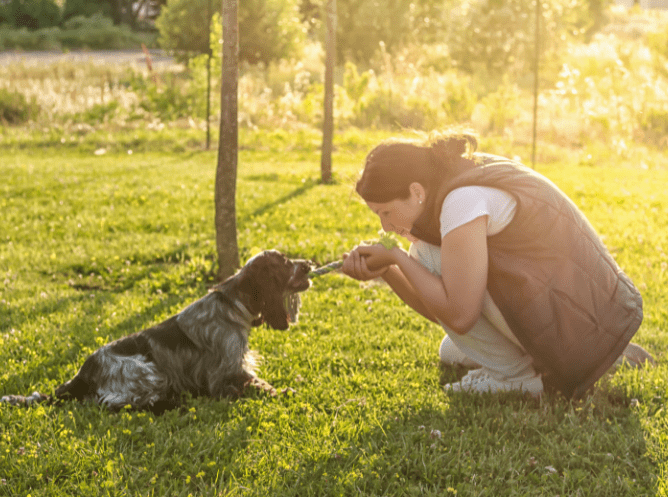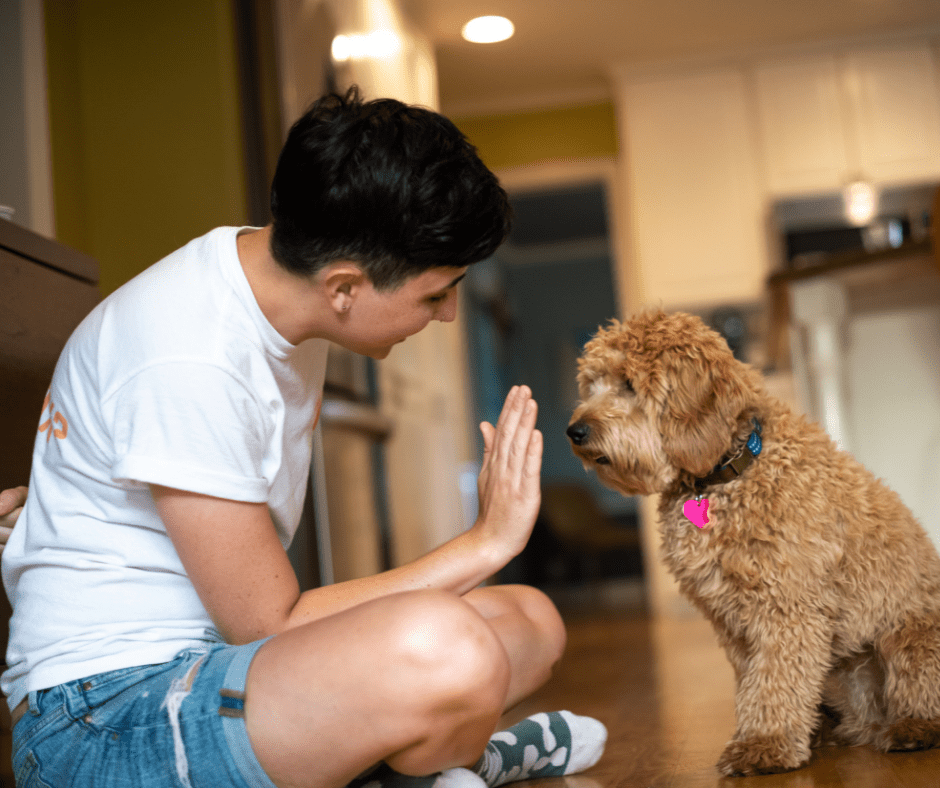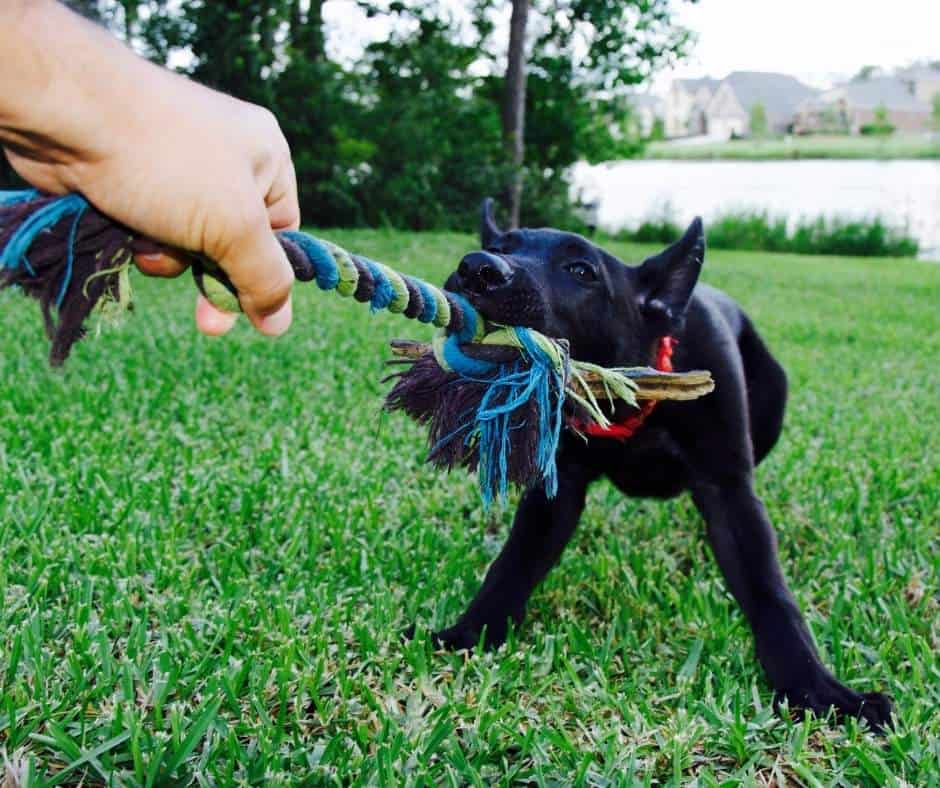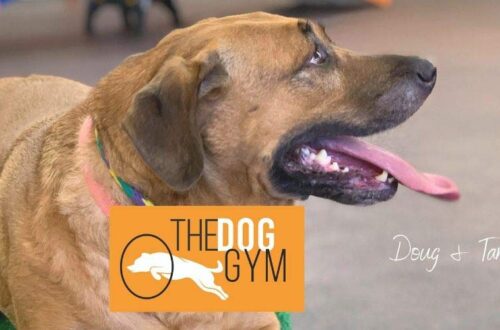
Dog Accessories & Tips To Train Your Puppy
Giving efficient training to your dog is essential for many reasons. Training provides physical and mental wellness for your puppy that makes both of you happy and content with the results. Dogs and pets, in general, need the training to instill a life routine and structure that will help them follow your instructions and abide by the rules.
It also encourages mental stimulation to keep them calmer, happier, and more obedient. Some pets can be really challenging during training, so reward-based training can be very sufficient to create a strong bond between a pet and its owner. Here are some dog accessories that will help train your puppy.

Top 5 Dog Accessories to Train Your Puppy
A Dog Collar
This is one of the most common accessories that you should have once you get your puppy. Choose a collar that fits the size of your dog’s neck, it shouldn’t be too loose or too tight to avoid strangling, allergies, or itching. A dog collar is essential for walking your dog; walking your dog needs a lot of training, so if you get the wrong size collar or something that irritates the little puppy, it’s hard to get them to obey your rules and follow instructions.
A Leash
Dogs enjoy long outdoor walks; going on walks has to be part of their daily routine and it’s a vital part of their training. Having the right length of the leash makes it easier for you and your dog to enjoy long walks.
The information found on Westley recommends that you build your dog’s walk set where you incorporate all the essential parts to make your walks functional, enjoyable, and fun. Long leashes are among the best options, especially for untrained puppies. It gives them freedom without the feeling of control that might irritate them and cause problems before they’re well-trained.
Houston Dog Mom tip: A slip lead is often the best to use when training. Placed high and tight on the neck behind the jaw bone, it allows you to more easily lead a puppy. Harnesses typically encourage pulling rather than discourage it. If you have a larger dog, a gentle leader nose harness can also help. Remember this: where the head and nose go, the body must follow.
Treats Bags
If you’re training your dog, treats have to be part of your training set. A treat pouch comes in handy, especially on long walks with your new dog. A treat bag or pouch with separate compartments makes it easier to reach out for your dog’s treats and is also useful for keeping other essential belongings like your keys, purse, and cell phone in check. Treat bags come in different sizes and materials; the best choice would be a washable one since it’s likely to get dirty.
Houston Dog Mom tip: We love the treats from Jessie’s Bites. Locally made by a team with intellectual and developmental disabilities, you can find these treats at local farmers markets or order them online.
Clickers
Clickers are very important tools for dogs’ training. They help reinforce positive behavior through the different sounds they produce. Clickers come in different types and can be easily found in your local pet store. Some types of leashes come with built-in clickers, or you can just go for a small one that can be easily attached to wrist wraps.
Target Stick
Target sticks are a great training tool to teach your dog some tips such as flipping, spinning, or bowing. They also help your dog to stay focused on targets while on walks. You can find target sticks at your local pet shops, or just use anything that can work as one. However, the best target sticks are foldable ones, so you can simply place one in your treat bag.
When training, you’ll teach your puppy to touch and follow the tip of the stick. Once they know that trick, you can more easily position them onto their bed (for PLACE command), into a car, anywhere you need them to go.

6 Essential Commands to Train Your New Puppy
Puppy training essentials include potty training, kennel or crate training, and what they are allowed to chew or bite. But in addition to that, here are the fundamentals that will set your new puppy up for success:
- Look. The Look Command, or Watch Me, means your dog is looking you in the eye, seeking your direction for the next step. This should have a calming effect on your dog, and they should be seeking out your approval for their next action.
- Place. Company coming over? Give the place command. Your dog should go to their designated spot, whether their kennel or a bed. This is great to keep them from trouble when you have company.
- Sit. The absolute basic. This should be their go-to position when they are in Look and waiting for you. Their default when they need or want something should be to come and sit in front of you.
- Stop. When your dog is running after that ball or squirrel and you drop the leash accidentally? The stop command should immediately stop them in their tracks.
- Stay/Come. Your dog needs to stay in one spot until told to leave it.
- Door etiquette. Your front door is a barrier that they shall not cross. This isn’t a command. It’s the 100% expectation that they stop at an open front door and do not exit without your permission. This task could save their life someday and will avoid the lost dog scenario.
Training a dog can be challenging, your puppy will definitely display undesirable behaviors at the beginning. Being patient is one of the best tips since this adorable creature will drive you crazy during the training process. Remember that dogs are sensitive animals, they have instincts of their own, and what you’re trying to teach them can sometimes be hard for them. Be consistent and don’t give up on them!




